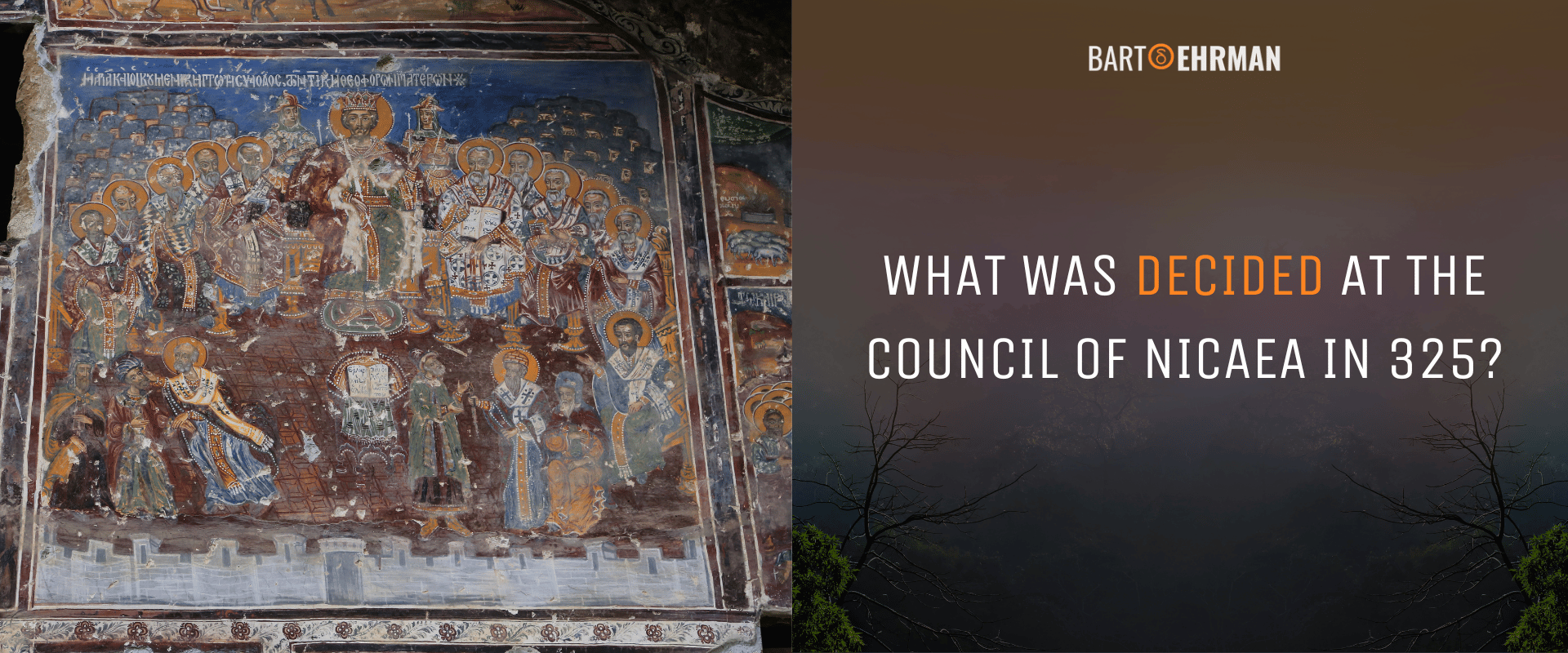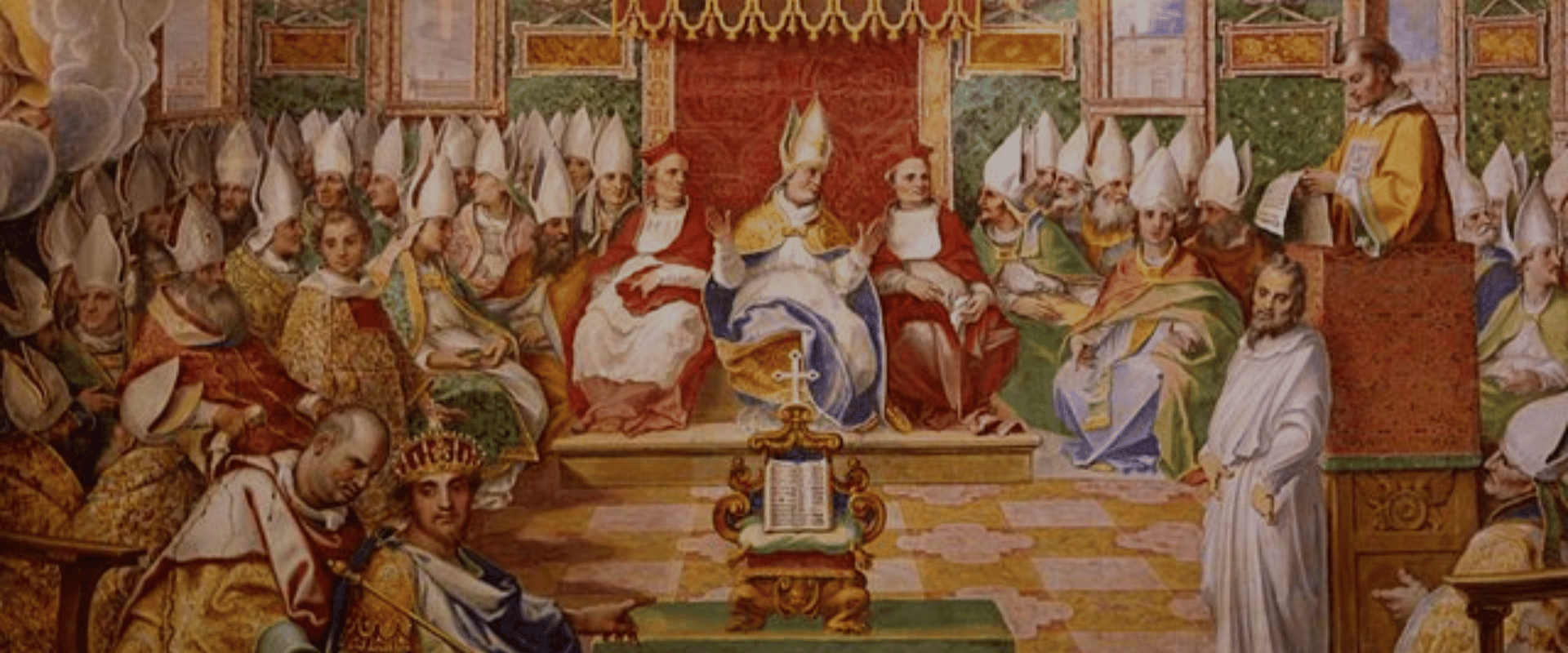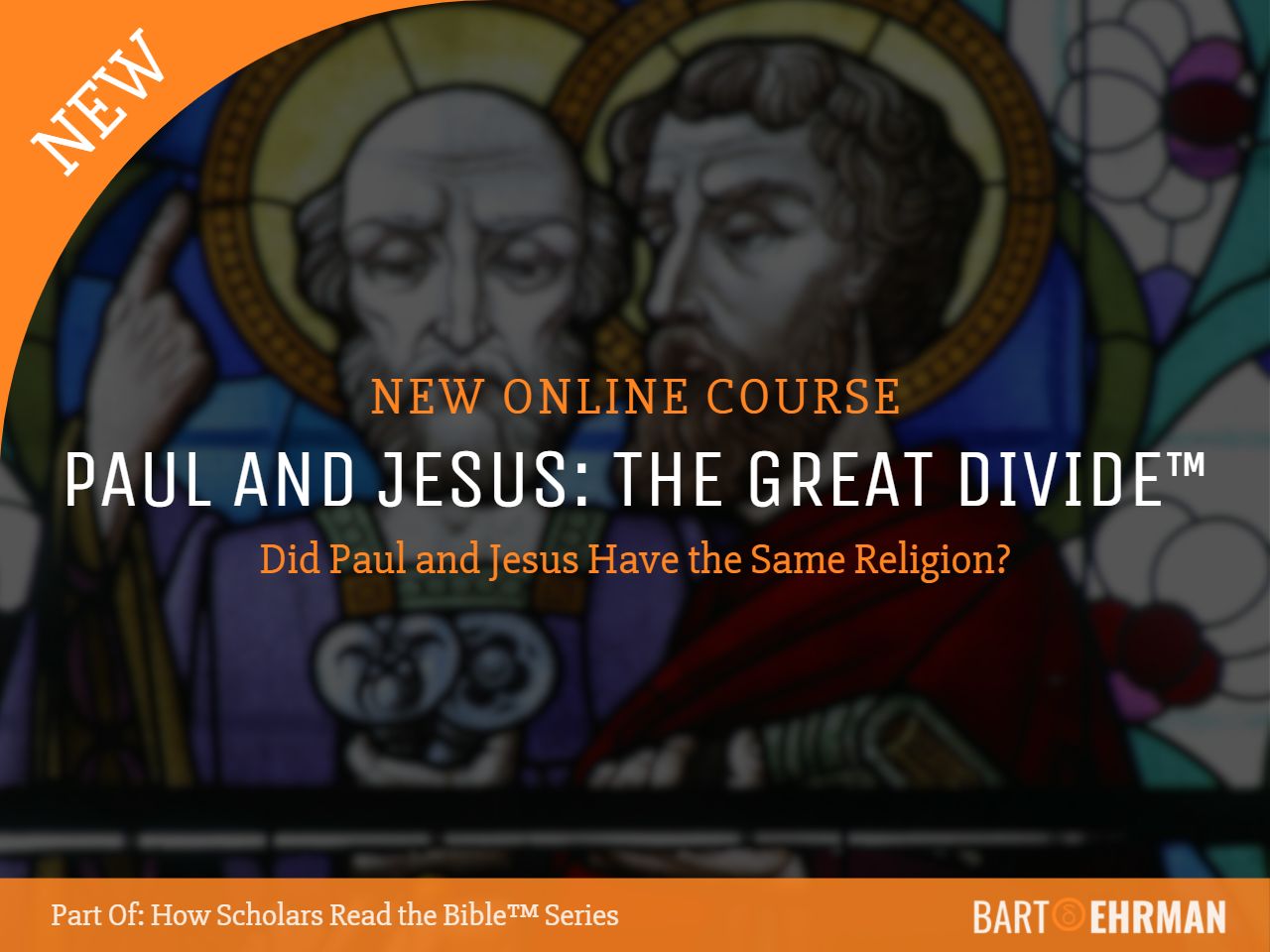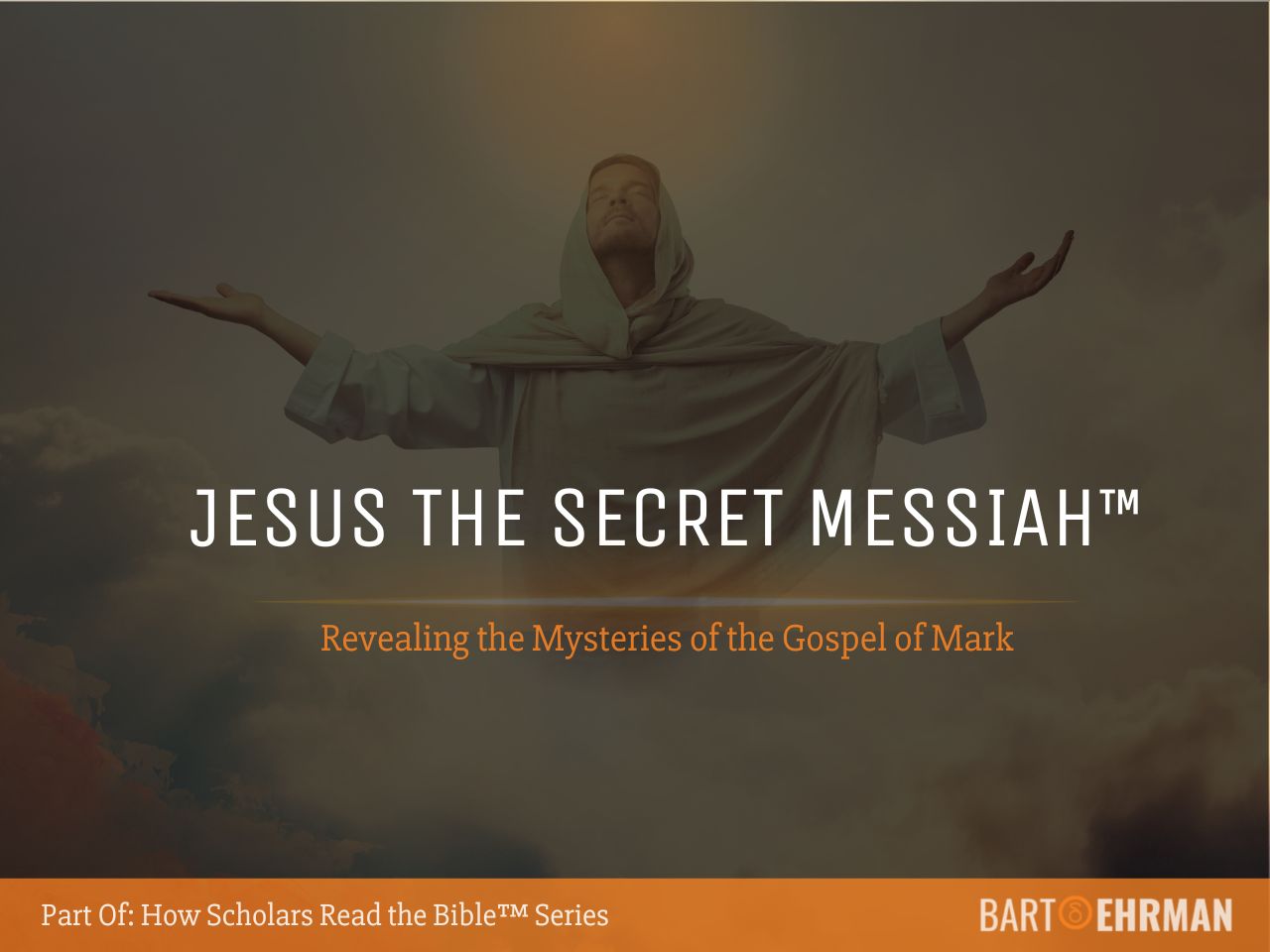What Was Decided at the Council of Nicaea in 325?

Written by Marko Marina, Ph.D.
Author | Historian | BE Contributor
Verified! See our guidelines
Verified! See our editorial guidelines
Date written: June 29th, 2024
Disclaimer: The views and opinions expressed in this article belong to the author and do not necessarily match my own. - Dr. Bart D. Ehrman
The triumph and stabilization of Christianity in the Roman Empire is one of the most captivating stories of late antiquity. This monumental transformation reshaped the ancient world's landscape and set the Western world on a Christianized path.
An important moment in this journey was the Church's first ecumenical council held in Nicaea (modern-day Turkey) in 325 C.E.
In this article, we'll provide a concise overview of the Council of Nicaea's key decisions. For those eager to dive deeper into the intricacies of this historic event, be sure to check out our comprehensive main article on the Council of Nicaea.
Here, we'll touch upon the most significant issues addressed during the council, shedding light on its lasting impact on Christian doctrine and practice.
But before we begin, I must invite you to join Bart D. Ehrman’s exceptional course “Paul and Jesus: The Great Divide.” In this course, Dr. Ehrman provides a scholarly look at these two pivotal figures and explores fascinating questions such as "Did Paul and Jesus have the same religion? Make sure to check it out! You won’t be disappointed.

What Was Decided at the Council of Nicaea in 325 C.E.?
Although Christianity originated during classical antiquity and eventually dominated the ancient Mediterranean, agreement over its core doctrines and structure developed more slowly. Only in late antiquity (c. 250-650 C.E.) did Christian leaders begin to solidify such essential concepts as the nature of Christ and his relationship with God.
These critical issues were hammered out through a series of long, and frequently acrimonious, debates. Luke T. Johnson, in his book Religious Experience in Earliest Christianity, notes that these debates stemmed from the paradoxical nature of Jesus' identity as depicted in the earliest Christian documents — the undisputed Pauline epistles and the canonical Gospels. (Affiliate Disclaimer: We may earn commissions on products you purchase through this page at no additional cost to you. Thank you for supporting our site!)
Written in the 1st century, these sources present clear elements of both the divinity and humanity of Jesus.
Given this dual portrayal, it’s unsurprising that early Christian leaders shaped fundamental dogmas through intense debates, polemics, and reconciliations. Popes, bishops, and Christian intellectuals convened in councils, exchanged letters, and penned sophisticated treatises arguing various interpretations and theological positions.
These discussions weren’t merely esoteric exchanges among intellectuals, but vital conversations about Christianity's very nature, beliefs, and rituals. There was, therefore, a series of all-church councils in the 4th and 5th centuries, where official dogma was determined, defended, and proclaimed.
One of the most significant was the Council of Nicaea in 325 C.E. So, what was the main purpose of the Council of Nicaea? To understand this, we need additional context.
This council followed shortly after the conversion of Constantine, the first Christian emperor. Although Constantine did not, as Bart D. Ehrman demonstrates in his study The Triumph of Christianity, outlaw pagan cults, he actively intervened in Church affairs to ensure its unity and stability.
In 325 C.E., Constantine presided over the Council of Nicaea, which had profound effects on the burgeoning Church. The Council of Nicaea addressed both theological and practical matters, with the nature of the Trinity being one of the most crucial theological issues.
The council debated whether Christ was of the same substance as the Father (Greek: “ὁμοούσιον”) or merely similar (Greek: “ὁμοιούσιον”). Grammatically, the difference was a single letter (iota), but for Church leaders, this question held immense significance.
The controversy began when a priest named Arius proposed that Christ was only similar and subordinate to God the Father. From this claim emerged a stream of Christianity known as Arianism, which gained a significant following in the Roman Empire.
In contrast, the majority of the Church, led by Athanasius, the fierce polemicist and future patriarch of Alexandria, argued that the Son was of the same substance as the Father, making the Son co-equal and co-eternal with the Father.
Not surprisingly, Constantine supported the majority's position on this issue. The council ultimately declared that Arius and his followers should renounce their beliefs, which were (not surprisingly) labeled heretical.
The judgments reached at this council, such as the formulation of the Nicene Creed, became the foundation for much of subsequent Christian doctrine. This creed affirmed the co-equality and co-eternity of the Father and the Son and tried to establish a unified Christian doctrine that would shape the future of Christianity.
By addressing these theological disputes, the Council of Nicaea played an important role in defining Christian “orthodoxy” and securing the fundamental unity of the Church. Of course, it took several centuries for the Church to resolve the most important issues, but the meeting in Nicaea in 325 A.D. was the beginning of this process.
While these theological decisions were pivotal, it's also important to address another common misconception about the council — that it determined the New Testament canon.
How Many Books Were Removed from the Bible at the Council of Nicaea?
Believe it or not, the most common question my students ask is whether the Council of Nicaea removed books from the Bible. The movie "The Da Vinci Code" has popularized this misconception about early Christian history.
In reality, the Council of Nicaea never discussed the development of the New Testament canon. It took the Church centuries to finalize the exact number of books in the New Testament, and those decisions had nothing to do with Constantine or any other emperor.
Bart Ehrman, in his excellent book The Truth and Fiction in the Da Vinci Code, outlines the criteria used to determine which books would be included in the New Testament canon.
By the end of the 2nd century, there was widespread agreement among most orthodox groups about the inclusion of the four gospels as scriptural.
The Book of Acts, the 13 letters of Paul, and the books we now call 1 John and 1 Peter were also widely accepted. However, others, such as the Apocalypse of John, the Book of Hebrews, and 2 Peter, were hotly debated, even into the 4th century.
So, despite common misconceptions, the Council of Nicaea didn’t address which books should be in the canon, and Constantine showed no interest in this issue.
The decision on the New Testament canon came later, after the Council of Nicaea, and wasn’t made by any single person or group. The first person to list the 27 books of the New Testament as canonical was Athanasius, the bishop of Alexandria.
In his 39th Festal Letter, written in 367 C.E., Athanasius listed the books he considered to be scripture, including the 27 books of the New Testament we recognize today. By the 5th century, there was widespread agreement about the canon, achieved through consensus and orthodox scribes’ decisions about which books to copy.
While the Council of Nicaea didn't discuss the formation of the New Testament canon, it did determine other things important for Christianity’s development. One such issue was the observance of Lent.

What Was Decided About Lent During the Council of Nicaea?
Lent is 40 days of fasting, prayer, and penance observed by Christians leading up to Easter, the celebration of Jesus’ resurrection. Traditionally, Lent begins on Ash Wednesday and ends on Holy Saturday, spanning six weeks and culminating in the most significant event in the Christian calendar.
The purpose of Lent is to prepare believers for Easter through self-examination, repentance, and spiritual discipline.
What was decided at the Council of Nicaea in 325 C.E. about it? Although this gathering’s primary focus was on addressing theological disputes and establishing a unified Christian doctrine, those involved also made decisions on various practical matters affecting the Church's liturgical practices, including the observance of Lent.
One of the key outcomes of the council was to standardize the date of Easter which, in turn, affected the observance of Lent. Before the Council of Nicaea, different Christian communities observed Lent at different times and with varying practices.
This inconsistency was partly due to differing calculations of the date of Easter. The so-called “Quartodeciman Controversy” highlighted these differences, with figures such as Irenaeus arguing against those who, following the Jewish Passover calendar, celebrated Easter on the 14th of Nisan (regardless of the day of the week). Irenaeus supported celebrating Easter on a Sunday, the alleged day of Jesus’ resurrection.
The Council of Nicaea sought to resolve these disputes by establishing a uniform date for Easter. The council finally decreed that it would be celebrated on the first Sunday after the first full moon following the vernal equinox.
By standardizing the date of Easter, the council also unified the period of Lent, ensuring that Christians worldwide would embark on this period of fasting and penitence together.
Conclusion
Now that we know what was decided at the Council of Nicaea in 325, it is easy to see why it was a seminal event in Christianity’s history. It addressed critical theological (e.g. Arianism) and practical issues that would shape the religion for centuries to come. By affirming the co-equality and co-eternity of the Father and the Son through the Nicene Creed, the council set the foundation for orthodox Christian theology.
Contrary to widespread misunderstandings, the Council of Nicaea didn’t decide on the canon of the New Testament. That was a gradual process that took place over several centuries and involved several complex criteria.
For those who wish to delve deeper into the intricacies and lasting impacts of the Council of Nicaea, we invite you again to explore our comprehensive main article on this historic event. There, you’ll find detailed discussions on the council's main decisions, the historical context, and its profound influence on the development of Christianity.


